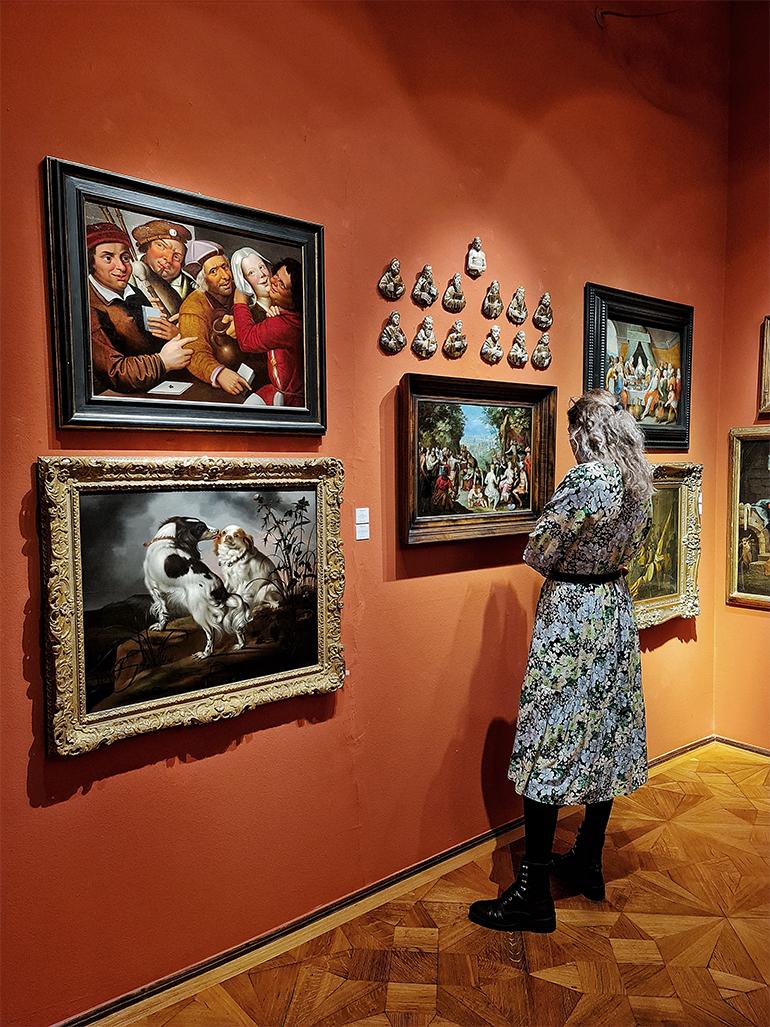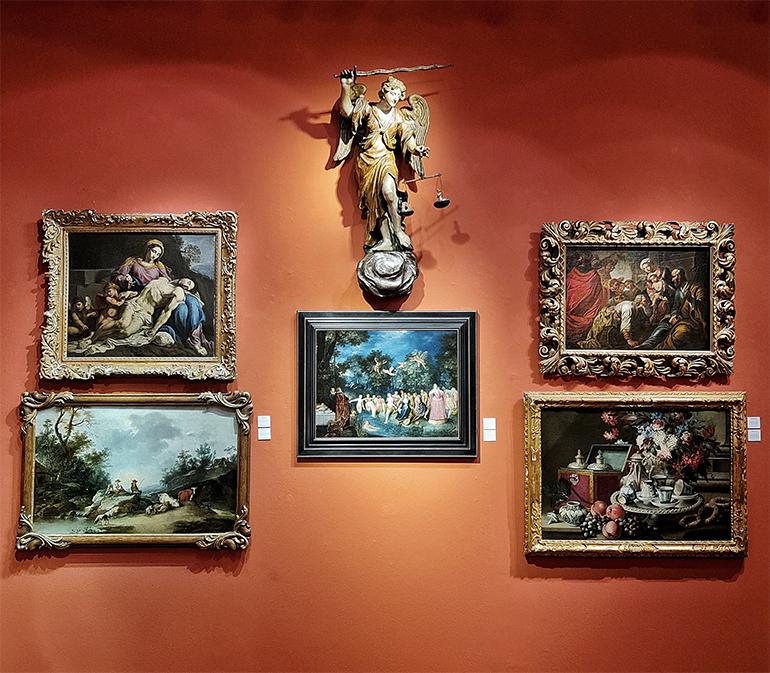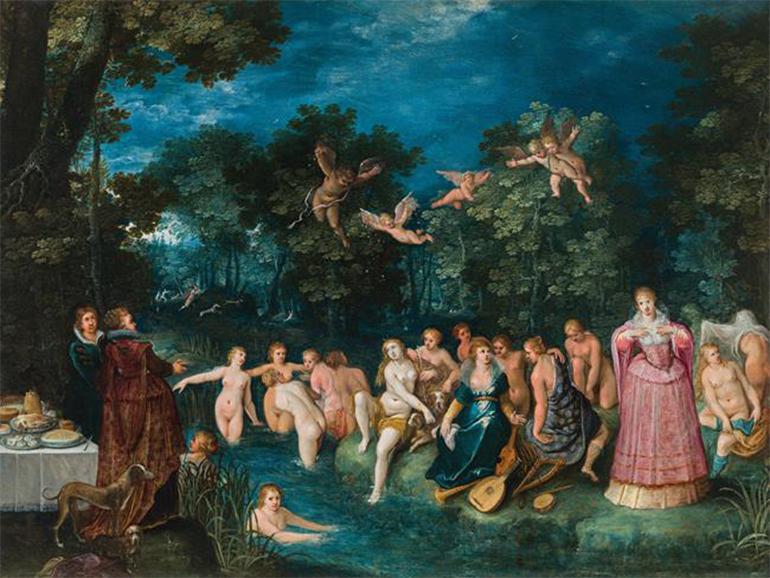A golden age into which Frans Francken the Younger was born. Brussels was ruled by the patron Albrecht VII of Habsburg and his wife Isabella, great patrons of the arts, who also invited Francken to their court. It was probably there that the two artists Jan Brueghel the I and Frans Francken II, who came from the Catholic Antwerp, met. At the Kinsky, we are now particularly proud to present works by both artists. However, the names are also impressive, but another circumstance makes you sit up and take notice, because both works call copper plates their picture carrier.

Copper as a background for painting, how did it come about?
Kareen Schmid: The copperplate was created in the 15th century at the same time as the copperplate of the Italian late Renaissance. Although copper did not spread north over the Alps as a picture support until about 1600, Antwerp very quickly became the centre for the production of these plates. It was also Flemish masters who perfected this painting - among others Jan Brueghel the Elder. According to Dr. Härting, paintings on copper plates are "painted treasures".
But what is the attraction of this painting, what distinguishes it?
KS: First, you have to know how to handle this material to understand its special nature. Usually the traces of processing on the back of the plate are clearly visible. First of all, it was rolled and hammered, then polished in various stages until it was finished. But it was not enough to simply apply the oil paint. A special primer was needed. A traditional recipe contains linseed oil, lead white and garlic – they were responsible for stickiness. But primers made of tin, silver and gold are also possible.

This process sounds elaborate, but why did artists use this material?
KS: Because the result was convincing. If the artists had made sure that the layers of paint were able to dry completely, early shrinkage was avoided. The material is stable, hardly dependent on humidity or temperature, and the image carrier hardly moves. As a result, these works show quite extraordinary states of preservation. In addition, the quality is excellent. Because the smooth surface made it possible to paint very small and detailed, to apply finest glazes and to work very differentiated in the application of paint. Moreover, the colours on copper plates always seem to shine out of themselves. It is the virtuosity and quality that fascinate here.

The painting styles of both artists, Jan Brueghel I and Frans Franckens II, could certainly fill pages in a comparison, but let's stay with the copperplate: Both works are painted on copper plates, can one draw conclusions from the picture carrier already?
KS: Certainly! If you look at the two reverse sides, you can expect a pleasant surprise. We are fortunate that both copper plates come from Pieter Stas, a well-known and identified copper plate manufacturer from Antwerp, and that they can be dated very precisely. Both were marked with a striking mark by Pieter Stas. But now things are getting exciting, because they are different. This is because it can be proven that Stas used the stamp we find at Francken until 1606, while from 1607 he added a new one to his plate. In the case of Brueghel, we have the additional good fortune that the year 1607 is also recorded on the reverse. However, Francken's work can also be dated very clearly around the year 1606, because high-quality copper plates such as the ones we have here were processed in a timely manner. In addition, the stylistic and historically appropriate classification into this year is also very clear.
Francken is famous for his innovative pictorial inventions, which he also marked with Invenit. If you look at a photograph of the work, you would think you were looking at the image of a huge canvas, because you find so many detailed figures and scenes on it. This representation is due to the copper that allows this detailed painting technique.
But what is now presented to the viewers, to which scenery are we invited? Because what we see is a clearing in the forest, through which a small stream runs. Women have gathered on its banks. Some of them have undressed, are about to dive into the water or are already swimming. Some of them are dressed in courtly attire and there is a table with delicacies on it, and a hunting party in the background is chasing wild animals. All this happens at night.

Is this richness of detail part of why Old Masters can still be fascinating?
KS: Certainly. But Old Masters can captivate with much more. They are of extraordinary quality and have a creative power that captivates the eye. The themes were topical then, but they still are today. With an Old Master you bring history and context home, but also conversation. These motifs process events and thoughts of the time from which the artist came - the same is true of contemporary painters. Art happens in context, but that does not mean that it loses its relevance. On the contrary, the historical context and our point of view removed from it open further levels of meaning!
What would be a reason to buy Old Masters?
KS: With Old Masters you buy quality and history. But much more important is that you discover a passion for the object and bid with this passion for the art work.
